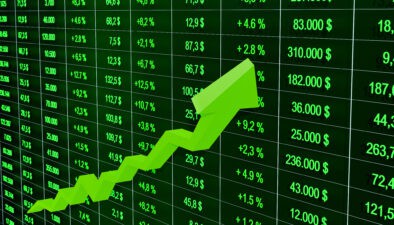After years as a dividend darling, the inevitable happened earlier this year when Crescent Point Energy Corp. (TSX:CPG)(NYSE:CPG) slashed its monthly dividend, dropping the payout from $0.23 per share to $0.10 per share.
The price of oil forced management’s hand. Yes, the company had a hedging program in place that ensured a price of approximately $90 per barrel for about half of its 2015 production, but that still wasn’t enough to fund the dividend, expansion plans, and acquisitions at bargain prices. Something had to give, and that was the dividend.
Even after cutting the payout, shares of Crescent Point still yield nearly 7%, which is an attractive yield in today’s world. Can investors trust this generous dividend going forward?
Problems at $40 oil
November wasn’t a good month for the price of crude. After peaking early in the month at $49 per barrel, oil ended the month at only a little above $40.
Crescent Point has continued its hedging program, but it’s not nearly as robust as 2015’s was. Approximately 33% of 2016’s production is hedged at $83 per barrel. Only 10% of 2017’s production is hedged, with a price floor of $81 per barrel. This means cash flow will decrease compared with 2015.
According to the company’s latest corporate presentation, it’ll have to cut back drastically on capital expenditures to be able to afford the dividend in 2016. Over the first nine months of 2015, the company has spent $1.24 billion on capex. The company expects to spend $1.45 billion in 2015, dropping that to $1.05 billion for 2016 if oil continues to stay at $40 per barrel.
Assuming oil stays at about the same level as it is today, Crescent Point expects to earn $1.55 billion in cash flow in 2016. After paying capex and other expenses, Crescent Point expects a payout ratio of 108%. This payout ratio drops to 99% if you include gains on the 2017/2018 hedging book.
At 501 million shares and a monthly dividend of $0.10 per share, Crescent Point is paying out $50 million in dividends per month, or $600 million per year. Remember, it eliminated its dividend-reinvestment program back when it cut the dividend, so it’s forced to pay every shareholder in cash.
Crescent Point could easily take that $600 million and use it to make a pretty sizable acquisition. It could also use the cash to pay down some of the $4.3 billion in debt. There are other uses of the capital.
One of the issues with Crescent Point is that it keeps using equity to pay for acquisitions. At the end of 2011 the company only had 278 million shares outstanding. These days that number has ballooned to more than 500 million. Sure, Crescent Point has picked up some pretty compelling assets that have been partially paid for by these shares. But constantly diluting current shareholders makes maintaining a generous dividend difficult.
Crescent Point does have a $1.4 billion credit facility that’s not being utilized. It likely has the ability to issue more shares to pay for an acquisition as well, although that would all but ensure a dividend cut.
Ultimately, Crescent Point’s huge dividend hurts the company because it takes away flexibility. Too much cash is going out the door in dividends. This makes it difficult to do things like shore up the balance sheet or make acquisitions.
I’m not sure Crescent Point is about to cut the dividend. I am sure that it’s hardly a secure payout. That’s not saying the company is about to slash the distribution. Investors should just be wary of it. In other words, treat this stock as a speculative dividend, not one that makes up the core of your portfolio.
 Stock Up Sale
Stock Up Sale







